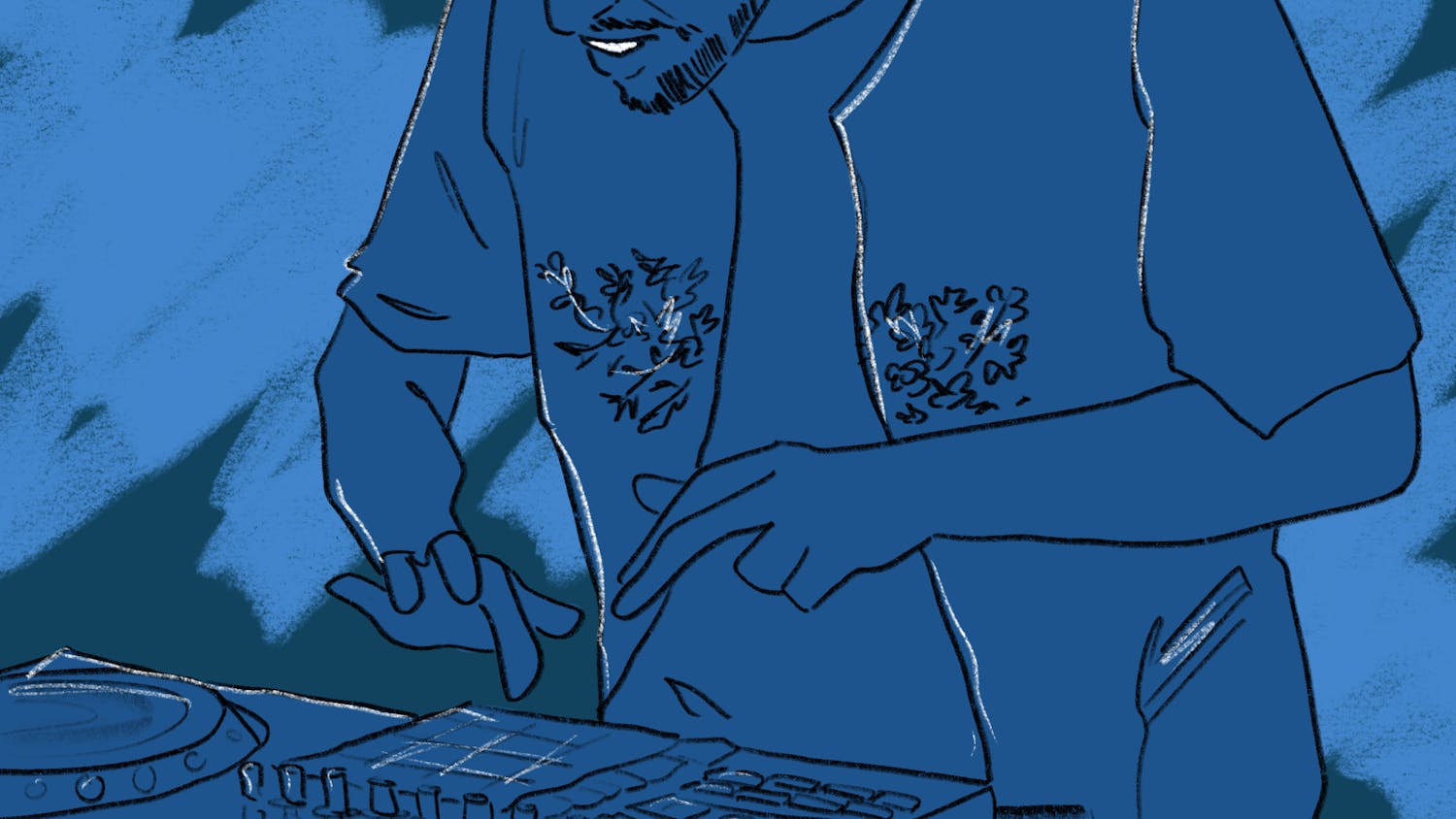World-renowned tabla player Sandeep Das will lead an ensemble of Indian musicians and dancers in a performance showcasing North Indian classical music and dance tonight at the Hopkins Center.
His ensemble will consist of Ramesh Mishra on the sarangi, Mouli Pal, an Odissi dancer, and Urmi Samadar, a Kathak dancer.
Music professor Ted Levin referred to the tabla as the principle percussion instrument in Northern Indian music, formed as a synthesis of indigenous Indian and Persian instruments during the Mughal Empire. It is now used widely in Indian Bollywood films and Indian pop, as well as various world music and fusion groups.
The sarangi is a bowed, string instrument that originated as a folk instrument and is said to resemble the sound of the human voice. Das considers Mishra to be one of the best and most senior sarangi players alive.
Das’s performance features an unprecedented combination of Kathak and Odissi, two stylistically and musically distinct dance forms that are rarely performed together.
According to Arati Gangadharan ’18, a member of Dartmouth’s South Asian fusion dance team, Raaz, Kathak is an Indian dance form that follows “a simplistic, beautiful, graceful form that has a lot of emotion and acting behind it.” Its origins can be traced back to nomadic, storytelling tribes. The style eventually became favored in courts across India.
In contrast, Odissi, which also has a long history in Indian classical dance, originated as a religious dance performed for the gods. Gangadharan characterized it as more step-based and rigorous.
Margaret Lawrence, programming director for the Hop, considered this performance a great opportunity to see the intimate relationship between percussion and dance stripped down.
Although Das has performed internationally since the 1990s, he initially exclusively played Indian classical music, but since meeting and playing with cellist Yo-Yo Ma, he has expanded his horizons as a musician by incorporating Indian classical music and the tabla into other styles of music and performance.
In 2001, Das was brought into the Silk Road Ensemble, a musical group started by Ma that consisted of musicians from various countries and cultures along the historical Silk Road.
Levin, the founding executive director of the Silk Road Project, said the project envisioned the Silk Road “as an extended metaphor for cultural exchange based on idea that circulation of ideas, technologies and fashions along the historical Silk Road — and also more broadly — served as an incubator for creativity and innovation.”
“I realized how music is much more than just doing what you have learned, so that inspires me all the time,” Das said.
Das’s eagerness to mix and blend seemingly opposing styles of music will be reflected in his performance on Thursday, as this performance will likely be the first one to feature a combination of Kathak and Odissi dancing, along with tabla and sarangi players.
“I felt let’s do something that will give a good glimpse of Indian music and dance, yet will have something that will challenge us too. So it’s not about doing something that I’ve known all of my life, but for example I will be playing with an Odissi dancer, which will be the first time,” he said.
The first half of the performance will be a tabla solo by Das, with the sarangi player playing a melodic structure to maintain the beat. The tabla solo will be followed by a solo by the Odissi dancer.
The third piece will be a traditional concert piece with tabla, Kathak dance and the sarangi. Das will then perform with the Odissi dancer. The performance will conclude by incorporating all four musicians and dancers into one final piece.
The improvisational nature of Indian classical music contributes to the unique nature of this performance and distinguishes it from conventional performances of Western music.
Prior to Thursday night, Das and the dancers have rehearsed once, and according to Das, the rehearsal primarily consisted of discussion rather than choreography.
“The more you rehearse, the more you choreograph, the more stale it becomes, so 90 percent of what we will do will be fresh on stage, and if you ask us to repeat it the next day, it will be different,” Das explained.
Through his performance, Das wishes to convey the joy that expressing himself onstage gives him.
Levin characterized Das as one of the leading tabla players in the world.
“He has a remarkable and inexhaustible ability to improvise, to come up with new patterns, new variations, that are clever, that are — even without any knowledge of this language — any listener can listen to him and understand that what he’s doing, there’s a rhetoric in it, there are jokes, there are questions and answers,” Levin said.
Gangadharan also praised the performance as presenting students with a rare glimpse into Indian culture.
“You come to a college like Dartmouth, where Indian culture isn’t really emphasized in general, so I think exposing students to something, where you can see a multitude of styles and, especially, to see the comparative nature of that, is an incredible option. I definitely think that it is innovative and I think it’s a great opportunity for students,” she said.
Das is also co-teaching the class “Music and Dance of Northern India” with professor Levin, during which he has not only introduced the tabla to the students, but has also brought in visiting artists to demonstrate various forms of Indian music and dance.
“My goal is not to turn them into tabla players, or to turn them into musicians. My goal is more to open a window in their lives and leave them with a positive experience,” Das said.
The performance will be tonight at 7 p.m. in the Moore Theater.



